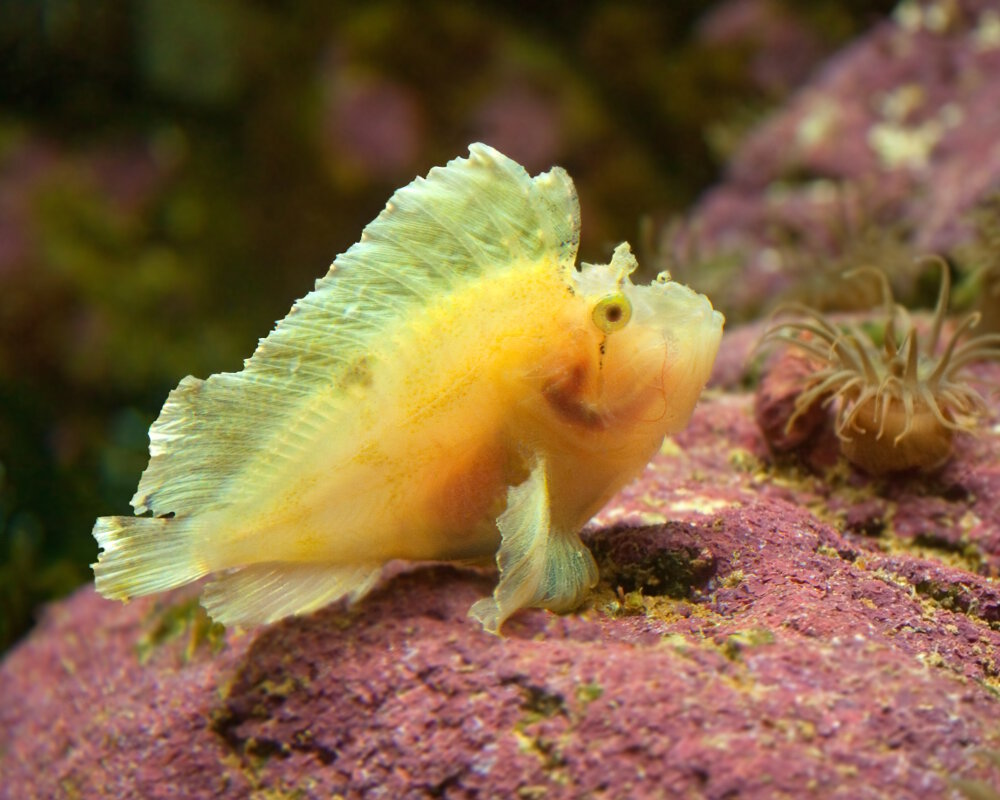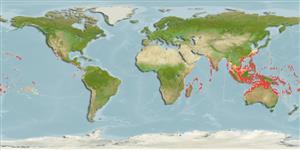Scorpionfish experts in camouflage
Scorpionfish will oftentimes “disappear” when placed in an aquarium, lying motionless and blending in with the surrounding rocks and plant life.
Scorpionfish Tank
Scorpionfish Taenianotus triacanthus

Their huge mouths quickly suck in any fish that is fooled by their superb camouflage. Scorpionfish also possess fins that are lined with venomous spines, but they are only used for self defense and not for hunting prey.
Depending on their natural surroundings, some species resemble stones and algae while others are brightly colored to look like corals and sponges. Scorpionfish can be found mainly near coral reefs and rocky bottoms throughout the world where they feed on fish and small crustaceans.

Some species will occasionally shed their skin to remove any parasites or algae that is attached to their body. Most Scorpionfish that are commonly available remain small and reach a length of 4 inches, with the larger types growing to 9 inches.
Scorpionfish are generally hardy and do not require a lot of space. They should be provided with some rocky structures and hiding places along with décor that is similar to their natural surroundings.
Scorpionfish may require live food such as ghost shrimp in the beginning.
Once they are settled in, they should be trained to feed on prepared meaty foods like fish, shrimp, crab, etc. Although many people love to watch them gulp down live feeder goldfish for “entertainment”, this is not recommended as it will lead to nutritional deficiencies.
Scorpionfish can be kept with larger fishes but should not be housed with aggressive types that will pick at their fins and appendages.
Remember to be careful whenever doing any work in your tank – the Scorpionfish “sting” is very painful and some people have had serious allergic reactions.
Scorpionfish have not been bred in captivity.
TankConditions: 72-82°F; sg 1.021-1.023; dKH 8-12
Compatibility: Foxface and rabbitfish, pseudochromis, tangs and surgeons, live corals, invertebrates, live rock, sand.
Taenianotus triacanthus
Taenianotus triacanthus (Photo credit: Wikipedia)

